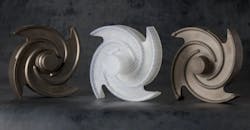FORMLABS – an additive manufacturing technology developer and supplier – announced a new resin material developed specifically for printing patterns for investment casting foundries. The workflow developed by Formlabs using Clear Cast Resin and its own stereolithography (SLA) 3D printing workflow allows direct, in-house production of casting patterns, to reduce costs, decrease turnaround times, and improve flexibility in iteration and production.
According to the developer, patterns printed in Clear Cast Resin, investment casting foundries can expect a clean burnout with low ash and no trace metals, “best-in-class” thermal expansion, and accuracy within 0.25 mm of the design. “Foundries can immediately integrate the material into their workflow without changing their investment material or burnout process,” it stated.
Having developed resins for hobbyists and jewelry makers 3D-printing patterns. Working with several beta testers for more than a year, Formlabs developed a workflow that industrial investment casting foundries can use immediately, without changing their existing process.
The workflow
- Use latticing software to create a non-solid internal geometry for the parts.
- Upload the latticed part to PreForm, Formlabs’ pre-print software, choose a printer, and select Clear Cast Resin material.
- Print the part.
- Wash the part in Formlabs’ Resin Washing Solution, isopropyl alcohol (IPA), etc.
- Critically, blow out any resin and solvent from the interior of the lattice using compressed air, ensuring no liquid remains inside the part.
- For some parts, it may be necessary to wash twice. - Allow the parts to dry for at least 30 minutes.
- Post-cure parts at 35 °C for 15 minutes.
- Attach parts to the investment casting tree.
- Dip parts in investment slurry following established workflow guidelines
- Burnout: Flash fire parts at 700-900 °C for two hours.
- Casting: Follow established casting workflow.
Formlabs emphasized that the new workflow requires no technical training or 3D printing experience, so foundries can start printing quickly, with no monitoring or oversight of the process required to produce “a completed, highly accurate pattern.” The lower labor time cuts overall cost per part, it noted.
Learn more at www.formlabs.com
